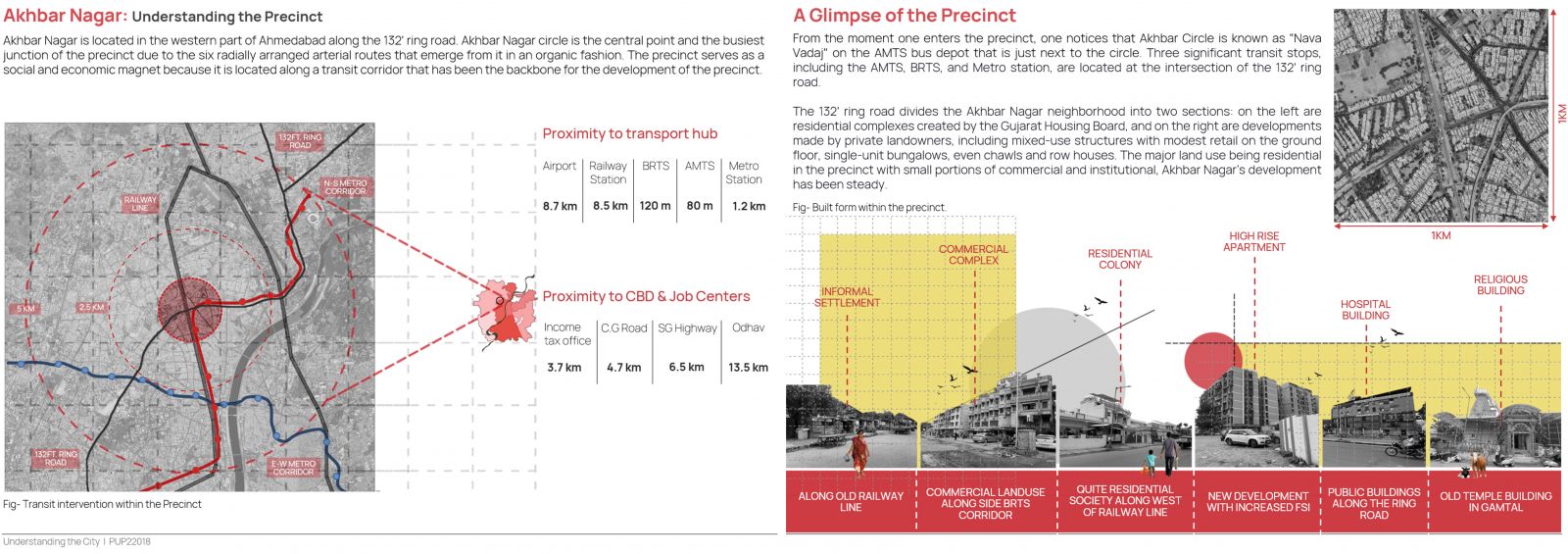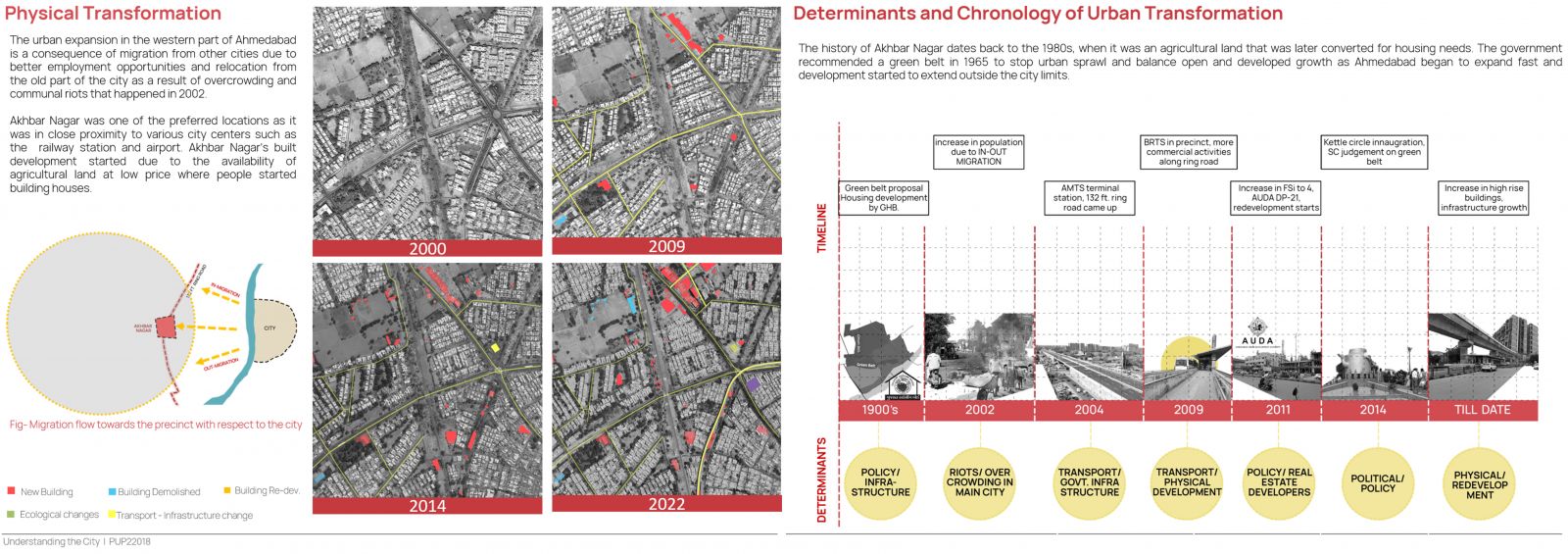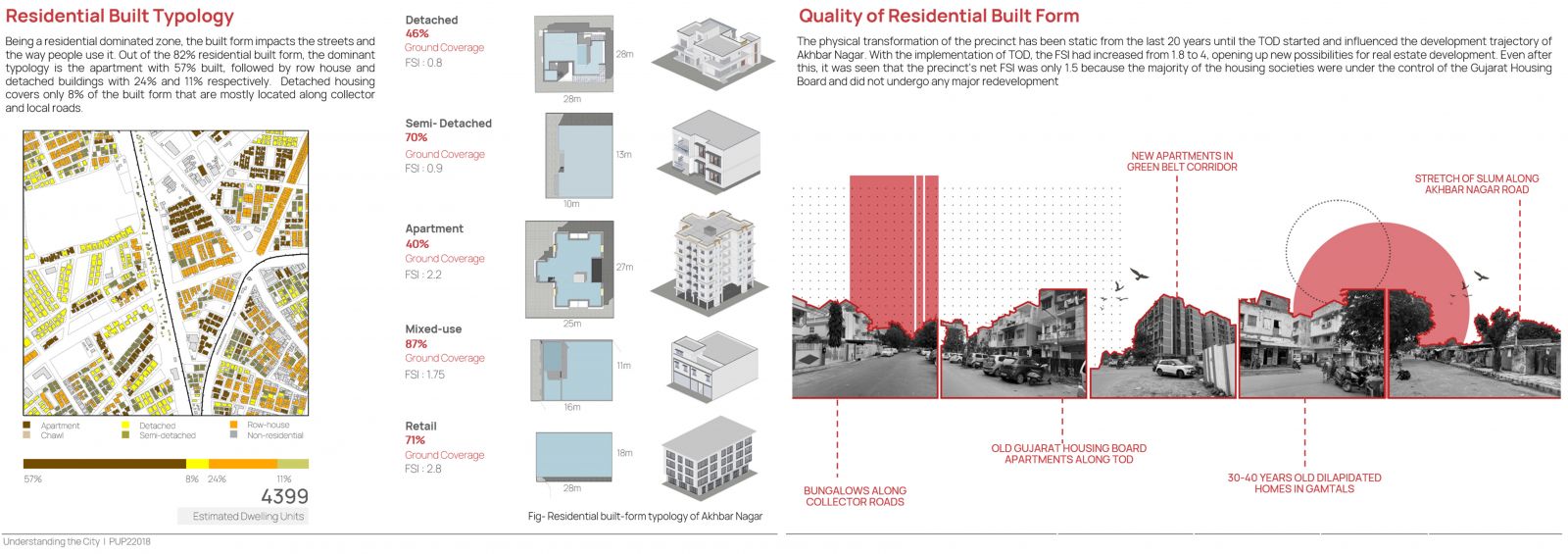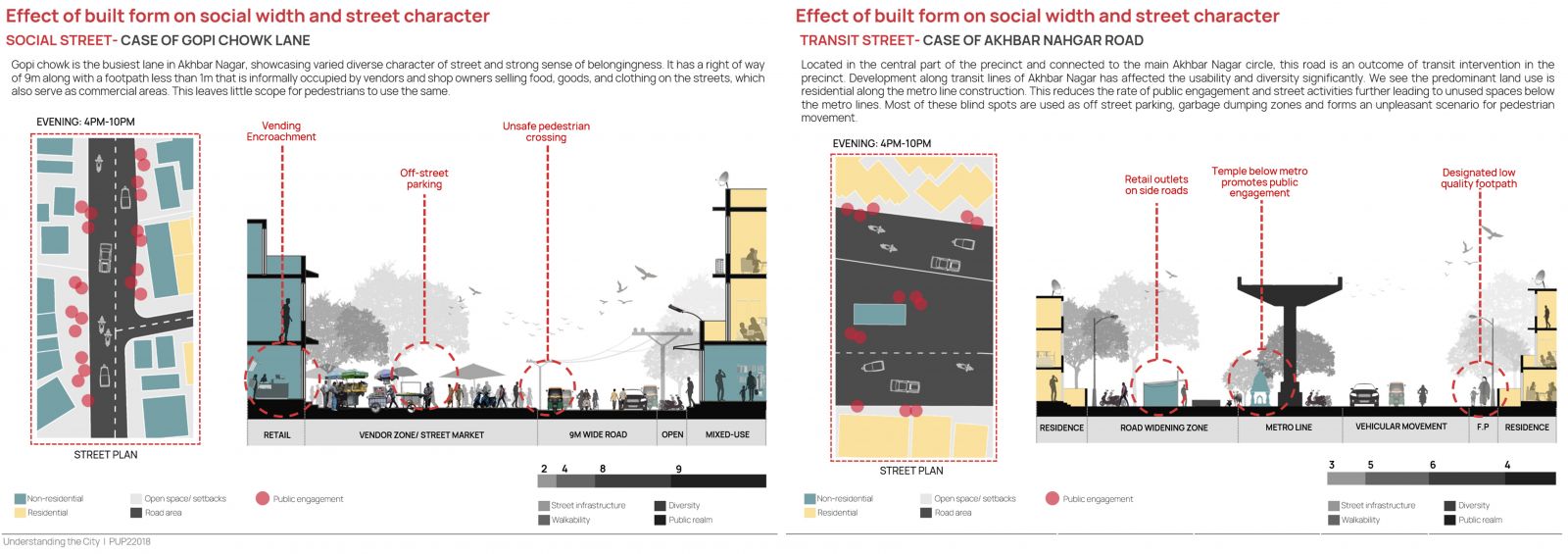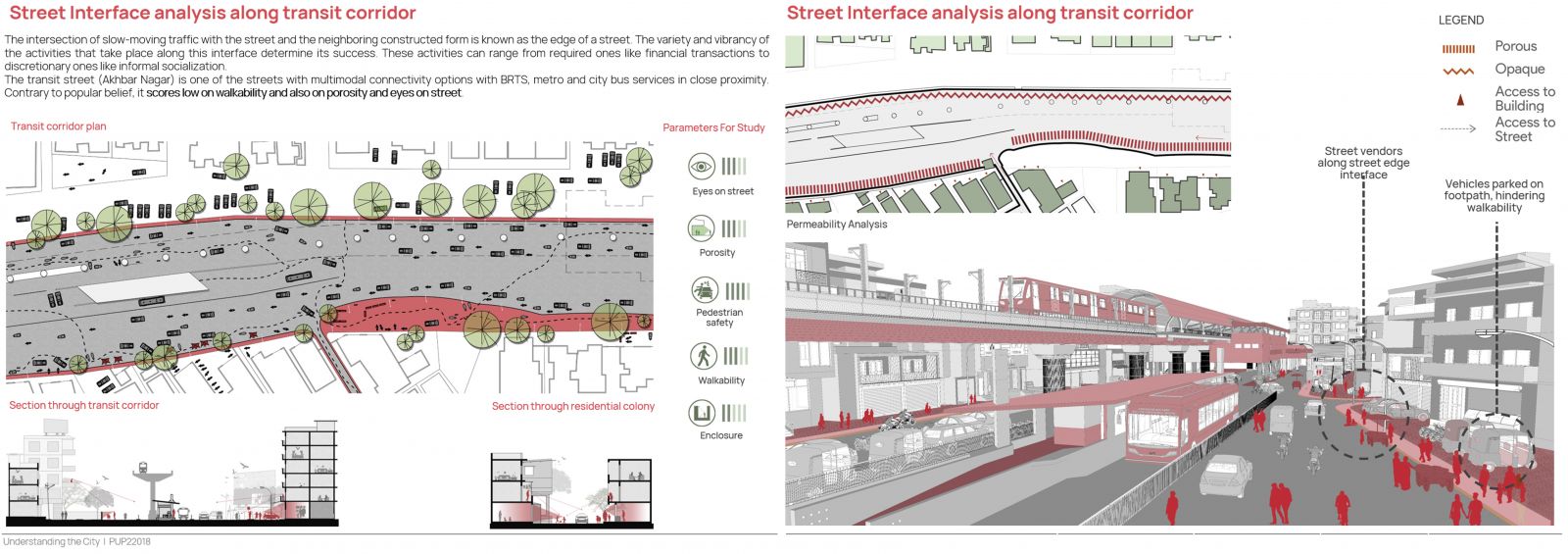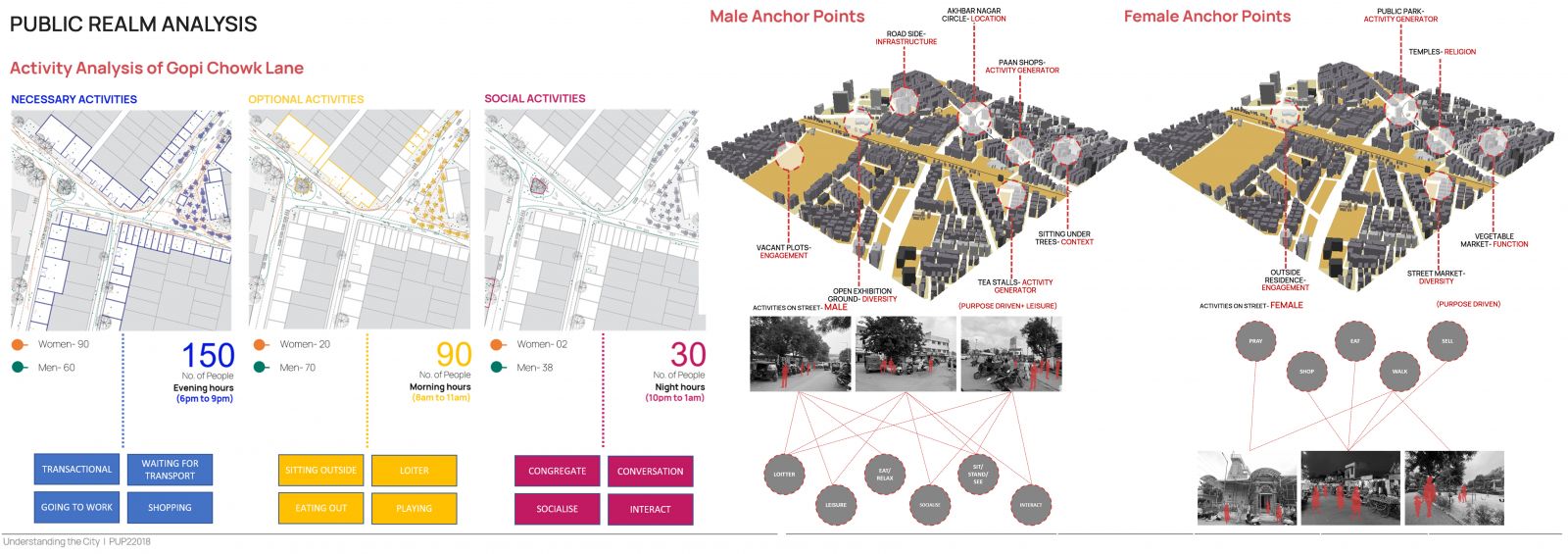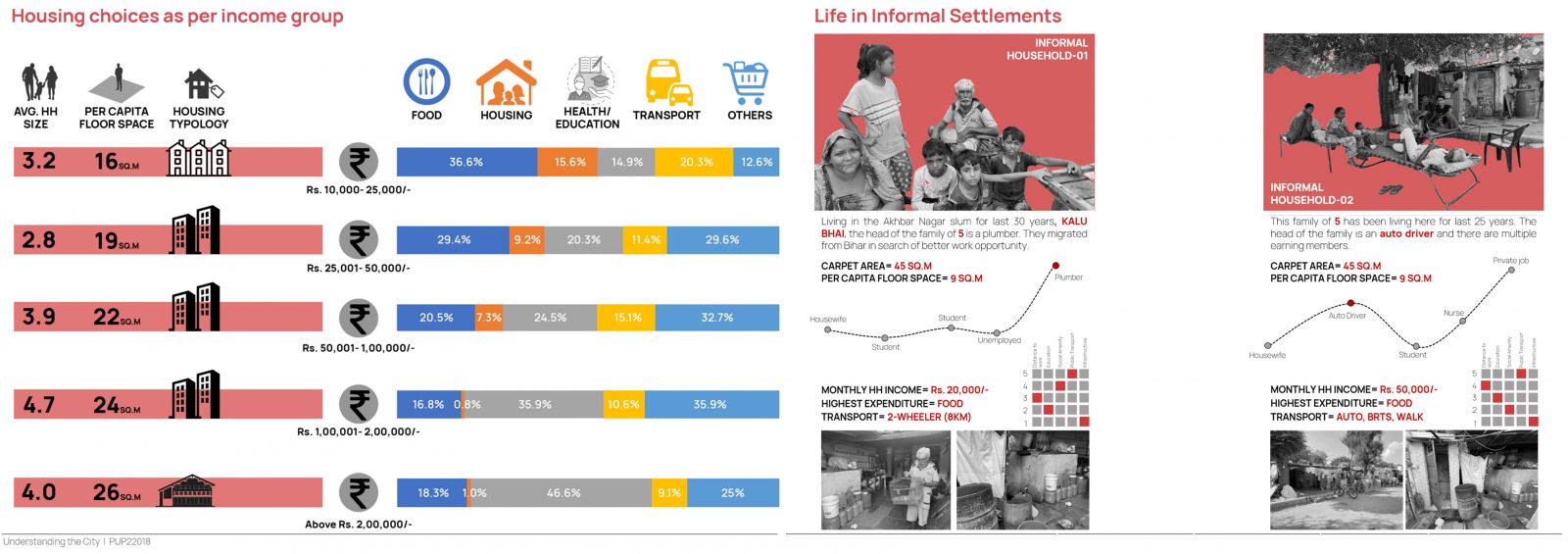- Student AKANSHA AGRAWAL
- Code PUP22018
- Faculty Planning
- Tutor/s Rutul Joshi,Umesh Shurpali,Anil kumar Roy,Ravi Sannabhadti,Nitika Bhakuni,Narendra Mangwani,Arjun Joshi,Tarun Patel,Rushil Palavajjhala ,Giby Abraham
- TA Sreedevi Kurur,Priyanka Baghel,Chinmay Gheware,Richa Bihari,Ratik Verma,Kirti chandra Devaguptapu,Rohini Chatterjee,Annesha Dasgupta,Arkadipta Banerjee,Garima Munjal
Akhbar Nagar located in the western part of Ahmedabad has undergone several policy interventions in the last two decades but most of the built form has remained static. It has a ring-radial street layout and a well-connected roadway network that offers connectivity both within the precinct and with the main metropolitan centers. Transit-oriented development has served as a nerve to facilitate passenger movement and connect key nodes and junctions. The neighborhood's structures and street life have been significantly influenced by the recent transit-oriented intervention in Akhbar Nagar. The construction of the metro and BRTS also had a significant impact on the region's economy and future development; in particular, the TOZ's property values and FSI had expanded quickly and attracted a lot of commercial activity. Real estate developers now want to invest in Akhbar Nagar. Akhbar Nagar has grown significantly in popularity as a residential area because of its close proximity to major jobs and urban regions. Akhbar Nagar is a phoenix in the making, waiting to rise from the static image it has created over the years. It is a precinct on the verge of a significant redevelopment that will entirely alter its reputation from the previous 20 years.
